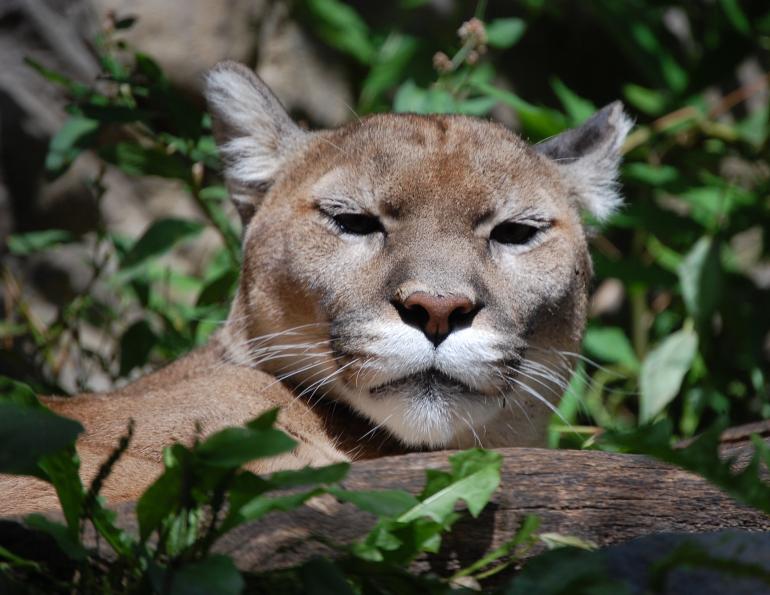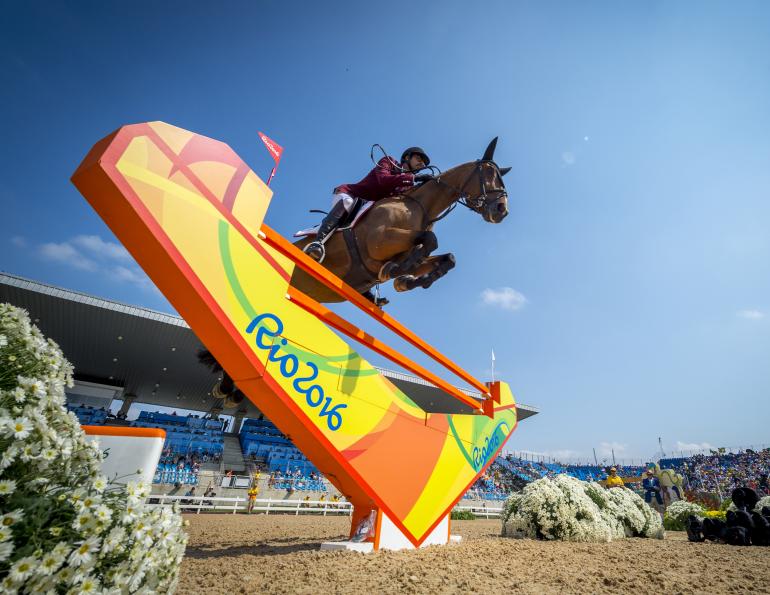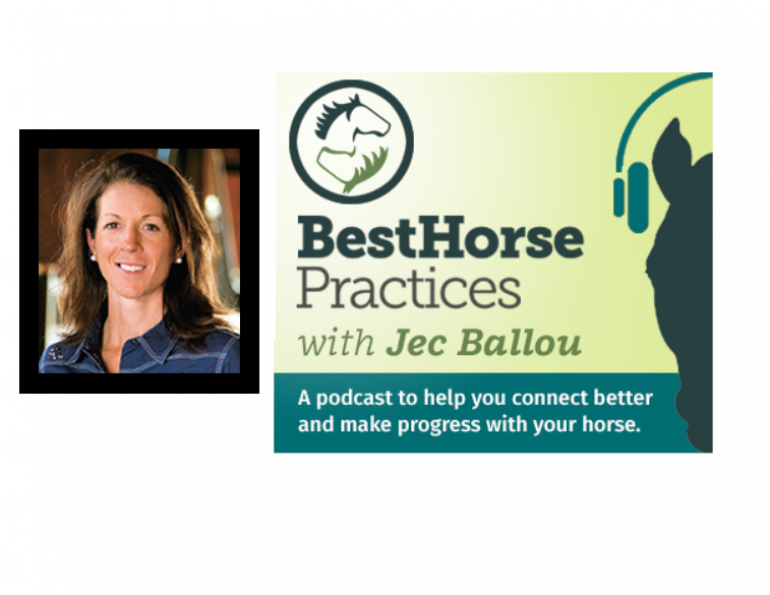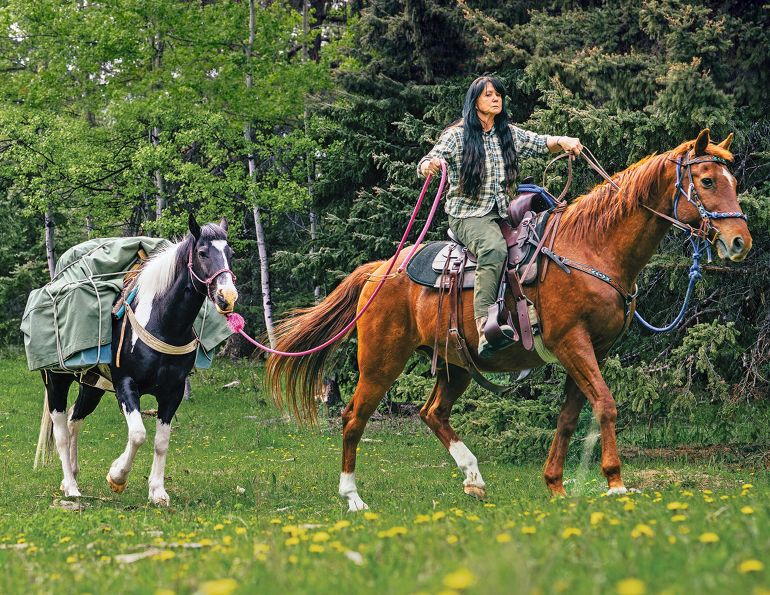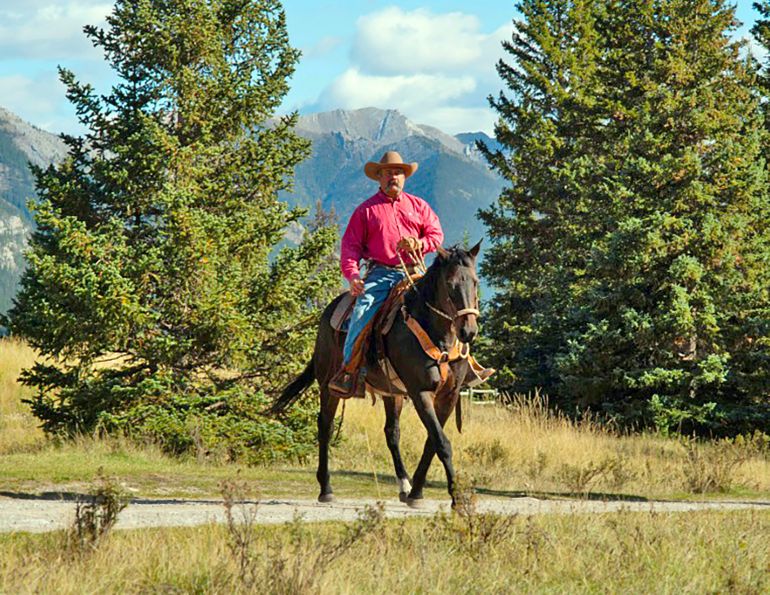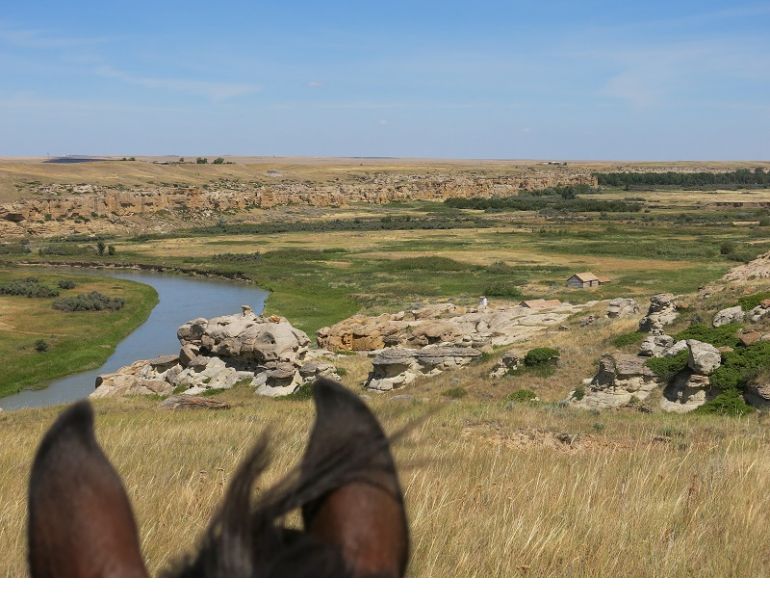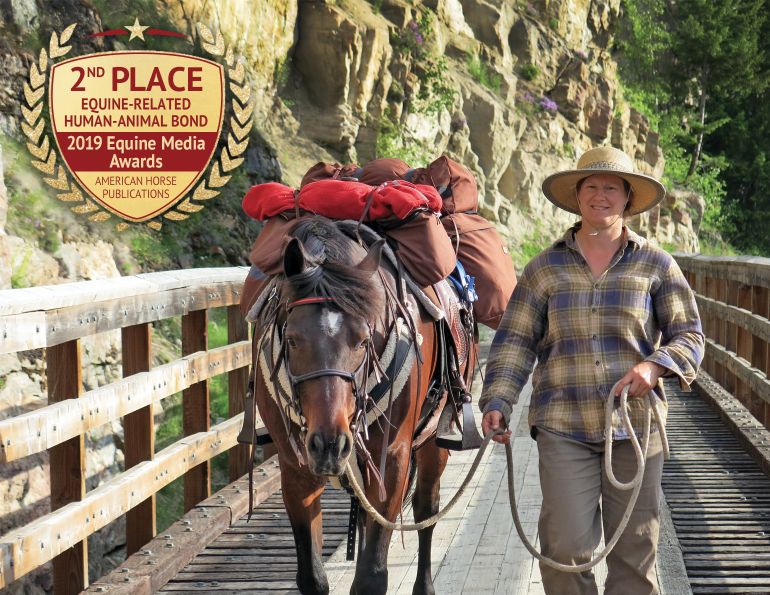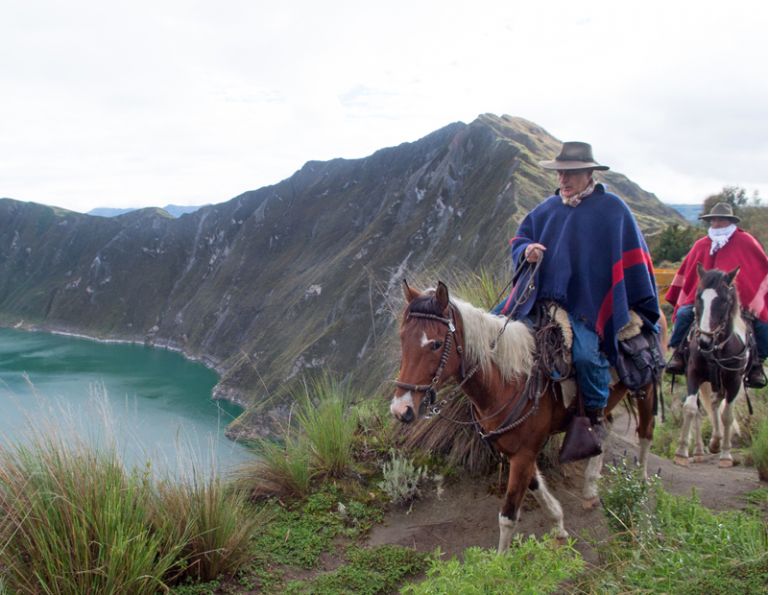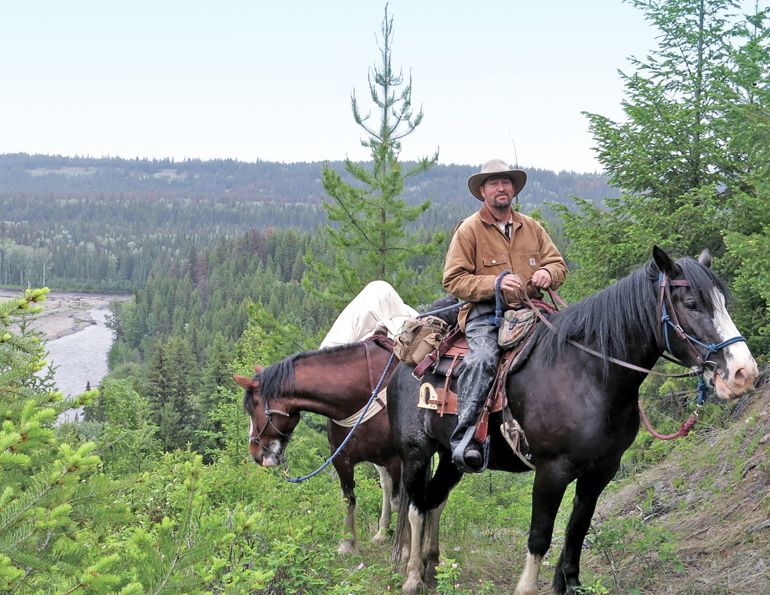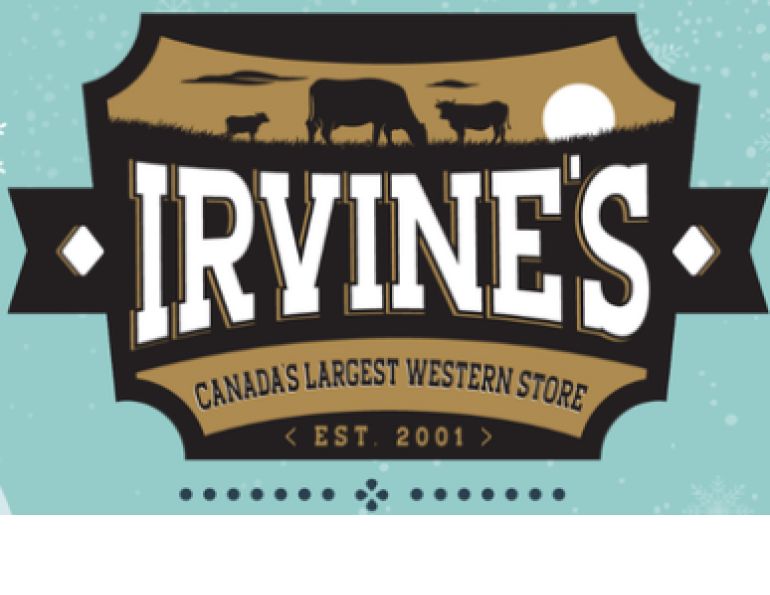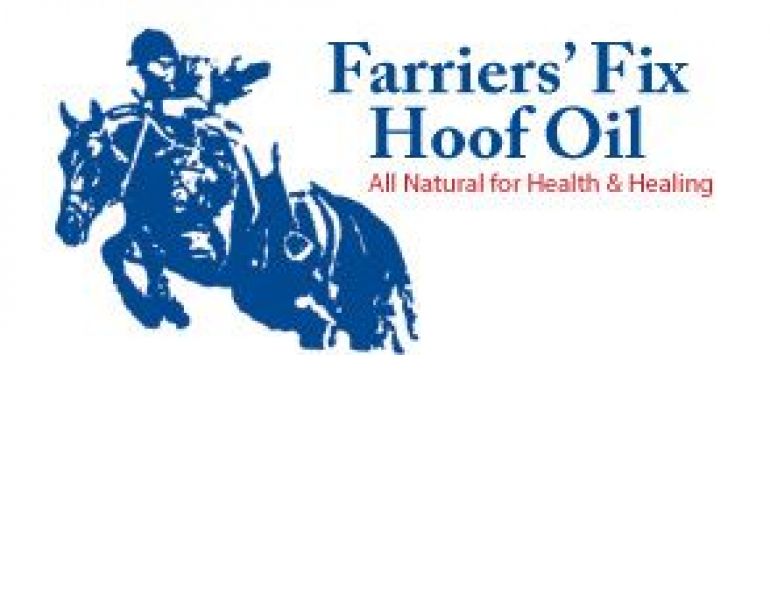By Stan Walchuk, Jr.
N.L. McAlmond and Barney Two Pony were part of the cowboy gang at the C Bar N ranch near White Owl Creek, Colorado. They had discovered a large grizzly bear track in the snow and decided to ride into a canyon in search of some mares and foals, get them back to headquarters, and, hopefully, get some idea of the location of the grizzly. When they entered the canyon they found fresh tracks of the mares and foals. They had packed in some feed and McAlmond scattered hay for the mares that they knew were nearby. Barney continued on ahead up the canyon expecting to find the horses very soon. He rode on a few yards then yelled, “Silvertip!”
A dead foal lay on the trail ahead and the marauding bear charged toward Barney. His horse reared, Barney fell in a heap, the horse bolted, and in a flash the grizzly gained the ground and swatted the horse. McAlmond’s horse bolted as well, slipping on rocks and throwing its rider. McAlmond recovered in time to witness the grizzly swat his horse’s neck with a crippling blow then literally crush the horse’s ribs and disembowel it with another blow.
Barney recovered his senses and pulled his .30-40 Colt pistol. The bear was about 30 feet away when it charged and Barney yelled, “It’s gonna charge, get ready to run when I shoot!” Barney shot, twice, before the bear dealt him a blow that tossed him a dozen feet. The bear pounced on him and slapped him around like a cat with a mouse.
McAlmond saw the pistol lying on the ground, managed to pick it up, and fired at the bear. The bear winced at the shot, then charged at McAlmond. At the last moment he shot again and the bear piled in a heap. McAlmond would later discover his lucky shot entered beneath the bear’s jaw and exited the top of its head. McAlmond passed out but luck stayed with him as other ranch hands found him. He was rushed to a hospital and it was six months of recovery from shock and injuries from the horse’s fall, which included broken ribs, before he could return to the ranch.
If you ride horses and have a fear of bears then this reads like your worst nightmare. But is it really all that bad? What is the chance of a bear or cougar attack while riding your horse? What is the chance of being injured or killed in an attack? And are there preventative measures that make sense?
Related: Trail Ghosts: Despooking the Trail Horse
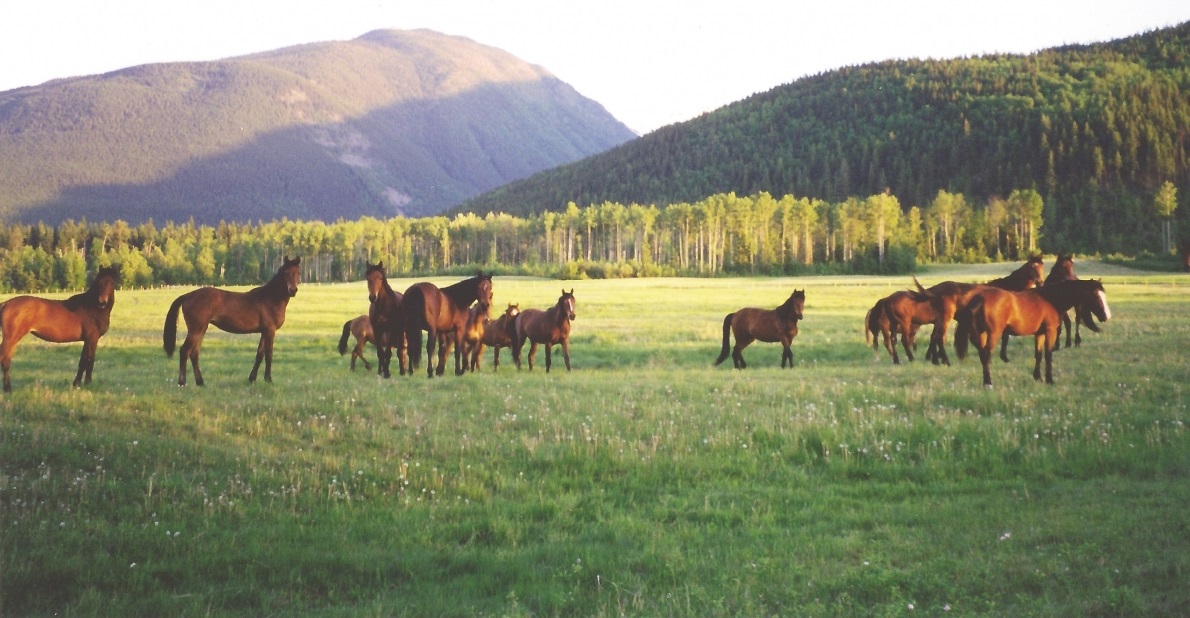
The author’s herd of horses in their field, where they have been attacked by a cougar in the past. Photo: Courtesy of Stan Walchuk, Jr.
This subject is of a personal interest to me. Bears and I have a long history: we seem to meet each other in the least expected places and moments, from my porch step to riding in the wilderness. I am a bear magnet. I have been charged by grizzlies three times, black bears have cut up my horses, and a cougar attacked my horses in a nearby field. I should be bear breakfast by now.
Once I walked, unexpectedly, into a pile of dead moose scrap: bones, hide, and skin. I was standing right on a bear’s meal and to my right was a very large sow grizzly, her head poking out of a thick willow bush, so close I could almost touch her nose.
Two large two-year-old cubs moved just off to the side. This bear had every right to destroy me. But that is another story. I suppose that my opinion of bears is based on my experiences and not my degree in biology (zoology).
In my research on predator attacks I came across many interesting statistics. The statistics that are provided in this article are government based and as accurate as I could find. However, keep in mind that statistics are not necessarily accurate, particularly when dealing with animal populations, but they do provide an indication and they can be very interesting.
There are an estimated 13,000 to 17,000 grizzly bears in British Columbia and about 550 to 1000 in Alberta. Since the 1980s, BC grizzlies have experienced a net increase (after mortality) of about six percent per year. Alberta has experienced either less increase or a slight decline.
The black bear population in Canada is about 500,000. BC has about 120,000 to 150,000, the highest number in their history. Saskatchewan has 40,000 to 50,000, Ontario about 100,000 and growing. Black bears adapt more readily to an urban environment than grizzlies and so are more often seen near human settlements. Port Coquitlam, BC, for example, had 900 bear sighting reports in 2008.
In North America since 1900 there have been 54 recorded deaths from grizzlies (including Alaska brown bears), 59 from black bears, and eight from polar bears. “Recorded” is a key word here because many believe that polar bears are the most aggressive and have actually killed far more people, but in the past Inuit deaths in the far north have not been as carefully recorded. A notable stat is that during the 1960s only four deaths were recorded; this rose to 11 in the 1980s, and 28 since 2000. That is a considerable increase in deaths (remember we are talking about deaths; the number of attacks would be considerably more).
So why has there been a spike in bear sightings and deaths in the past ten years? All the experts agree that the human population is simply that much larger and, because bear numbers are stable or even growing in some situations, confrontations are expected to continue to rise in number.
I believe that there are other factors involved. More and more bears are becoming habituated to urban or semi-urban environments, which means we can expect more conflict in our backyard. Second, in past years many of the bolder bears were simply shot and bears had more respect (or fear) for mankind in general.
In 2008, 54 grizzlies died in Yellowstone Park and area, a considerable number since there were estimated to be only 250 to 500 bears in the vicinity. Thirty-seven of these were human related deaths, 20 from hunter conflict, and the rest from vehicles, trains, etc. The natural deaths were largely blamed on the low pine nut harvest from beetle kill trees, their prime source of fall food. After intense study officials concluded that hunter education and the use of bear spray would save bear lives. Their second recommendation was to allow limited hunting of grizzlies in the three neighbouring states in order to encourage grizzlies to shy away from human locations.
So where does that leave riders and horses? The only death from bear attacks that occurred while riding a horse that I could discover was the story at the beginning of this article. However, I uncovered over 250 bear and cougar attacks and many of them involved horses. There are many stories from Canada, the USA, and across the globe of horses attacked, clawed, bit, harassed, and killed by bears, cougars, and wolves; there are several stories from Western Canada in the past few years.
In the town of Princeton, BC alone, three cougars were destroyed in just over a week in July 2008, and there were eight attacks recorded on dogs in 2009. Experts feel that the most likely place to experience a cougar attack in North America is on Vancouver Island, BC. This is surprising since Oregon has an estimated 5000 cougars.
Since 1900, 22 people have been killed in North America by cougars, six in BC. I believe only one incident occurred while a horse was being ridden and this was on Vancouver Island. There have been more incidents of attacks on, and deaths of, bike riders by both cougars and bears, and I suggest that the reason is because there are simply many more bike riders out there than horse riders.
In the USA there were 40 people killed last year from insect bites and 45 from lightning. The reality is that you have a far greater chance of dying from bugs and driving to visit your horse than from a bear or a cougar attack. However, the chances of you and your horse being attacked and mauled is much greater than it was several years back, and I am living that experience.
Related: Horseback Riding - Trails of Many Faces
Our 40 acre home piece is about 50 percent pasture and the rest forest. It is surrounded by a large forest, and bears walk back and forth freely. Three years ago a renegade black bear decided to harass my herd, to the point where claw marks were ripped across the chest and flanks of four of our 24 horses. Some horses were cautious and some were plain terrified about what lurked behind every bush, to the point where riding them through the woods kept you on the edge of your seat as the horses saw the great bear ghost at every turn. You need to understand that for years these horses have lived with and accepted bears. They actually became so accustomed to them that they simply looked at bears and considered them big, dumb Labrador Retrievers. The bear must have moved on because things settled down, but it took at least a year for the memories to fade.
It has been said that grizzly bears never attack a string of riders and horses, but I have experienced differently. Pete and I had been slowly picking our way up a remote mountain valley. Alpine slopes ran down to the graveled stream bed that we rode on as the valley narrowed. The stream bed was gentle and we began to curve around a 50 foot precipice on our right. Half way around the bend my horse’s ears perked forward and his head came up. Something did not smell right and we were in grizzly country. I stopped and checked the progress of the four packhorses and Pete behind me. Everything was fine.
“Giddyup,” I said and Donny walked out like the obedient horse that he is; but no sooner had we rounded the cliff when a large grizzly faced us from 50 yards off. “There’s a grizzly to our right,” I said, “keep riding past me, I want to get a picture.”
The bear was slowly walking up out of the stream bed, making his way up a willow and grass slope, nonplussed with the seven horse parade. I pulled out the camera, found the bear in the lens, and snapped a shot. The horses had already ridden past the bear and there appeared to be no pressure, but before the second photo was taken, the bear just seemed to calmly decide that he did not like our company and turned back down the slope toward us. As he walked closer he began to walk faster and faster. “Pete,” I said, “the bear is coming at us. Keep riding.” I was determined to let the bear know that we were not a threat. He hit the stream bed and seemed to stiffen up into a determined fast walk. In a moment the horses would discover there was an angry grizzly hot on their heels and all hell would break loose.
I bailed from Donny then walked backward with the horses, hoping the charge was a bluff; but 30 yards away, then 20, then 15, faster, more determined the bear came at us. There was no quit in this bear. No teeth snarling, no blinding speed, just a deadly single-mindedness that had as much chance of being sidetracked as a locomotive. Blood rushed to my head. Focus, focus, focus… “He’s coming at us!” I yelled. “Get ready!”
Well, I am still here, thank goodness, as otherwise I have no idea where my kids would get their money from. And I can tell you this: I always travel prepared for trouble and I always keep my third eye open. Here are some suggestions, most of them rules that I live by, to help you and your equine partners as you head out into bear country.
1. Always have bear spray holstered on your hip. Practice, again and again, getting it out, flipping off the tab, aiming, and pretend shooting. Bear spray has been proven, over and over, to be effective — not 100 percent effective but about 75 to 80 percent effective, and that is a whole lot better than zero percent effective. There is agreement by many that numerous bears that would have wandered off if bear spray were the primary means of protection are needlessly shot from far distances.
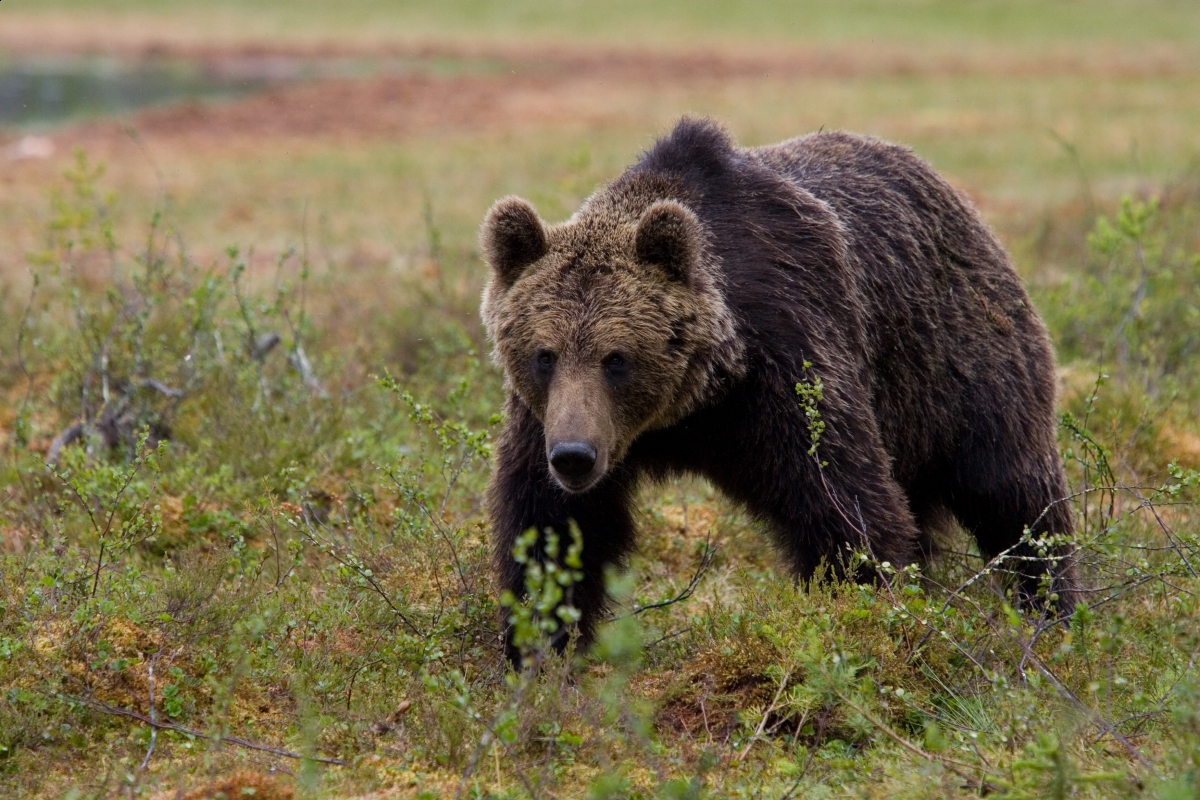
If you see a bear or cougar when riding, assess the animal. Most bears will wander off but carrying bear spray is recommended should you meet a bear in a bad mood. For an experienced shooter, a large bore firearm can be more effective than bear spray. Cougar attacks are often from above and without warning, so if you see the cougar first do not turn your back and walk away.
2. Large bore firearms that are quick to handle and in the hands of an experienced shooter can be more effective than bear spray. However, time and time again guns jam and people shoot ineffectively when under the stress of an attack. Hand guns are less than 50 percent effective with a bear charge. They may feel good to a cowboy ego but I don’t recall Clint Eastwood dropping any bears with his Colt, regardless of what happened in the story at the beginning of this article.
3. When I am riding and I see a bear or a cougar, I assess the animal. Bear sightings are most often casual and the bear simply walks off and I just continue on my way. If the bear is actually on the trail ahead or nearby and does not begin to walk off, I dismount and get the bear spray or firearm ready. Getting dumped from an excited horse with an unfriendly bear at hand is not in my day book. Generally I do not like to stop completely but walk slowly as the bear moves off. Even a sow with cubs will normally think of its cubs first and be more than willing to move off with horses and riders present.

Hobbled and tethered horses are less likely to be confronted by predators if they wear bells. Keep wildlife out of the campsite by ensuring food is contained in tightly sealed pack boxes and containers.
4. In areas where I see a lot of fresh bear activity I will remove the dong stopper on the horse’s bell and let it clang until I feel we are in relatively safe country. I believe that while hobbled and grazing on a trip, or grazing at home, the bells help keep bears and cougars at a distance. At home I now leave bells on a few horses, and horses that are tethered or hobbled overnight in the wilderness all have bells.
5. A bear encounter may be sudden but a brush with a cougar is more so. Cougars are silent, stealthy, and attacks are often from above and without warning. If you do see the cougar first do not turn your back and walk away. Make yourself large, raise your arms, and make noise. Fight a cougar if it attacks, do not be placid.
6. I believe that fatal grizzly attacks can happen simply because people were in the wrong place at the wrong time with the wrong bear in the wrong mood, sows especially. With black bears I believe that fatal attacks often stem from hunger and as a result playing dead is considered less effective than fighting back. While it is not good to show fear, I believe you should not threaten bears with direct eye contact. Appear large, confident, and non-threatening. The standard procedure for a grizzly attack is to assume a fetal position with your hands behind your neck in an effort to protect your head. In theory, the bear will lose interest and walk off. However, I believe there comes a time when, if a grizzly does not lose interest, you need to fight back. Bears and cougars have successfully been fought off with everything from sticks to jack knives.
In June of 2009, for example, a grizzly attacked 78-year-old Tom Wanyandie and his son James, longtime horse people from the Grande Cache, Alberta area. Tom jammed his walking stick down the bear’s throat, then whacked him a few times on the nose as the bear attacked James, successfully driving it off. An interesting note is that James had a firearm, shot, and missed.
7. Keep food smells to a minimum. When on backcountry trips keep food contained in tight pack boxes or plastic containers.
Related: On a Quest to Ride with Bison in Canada's National Parks
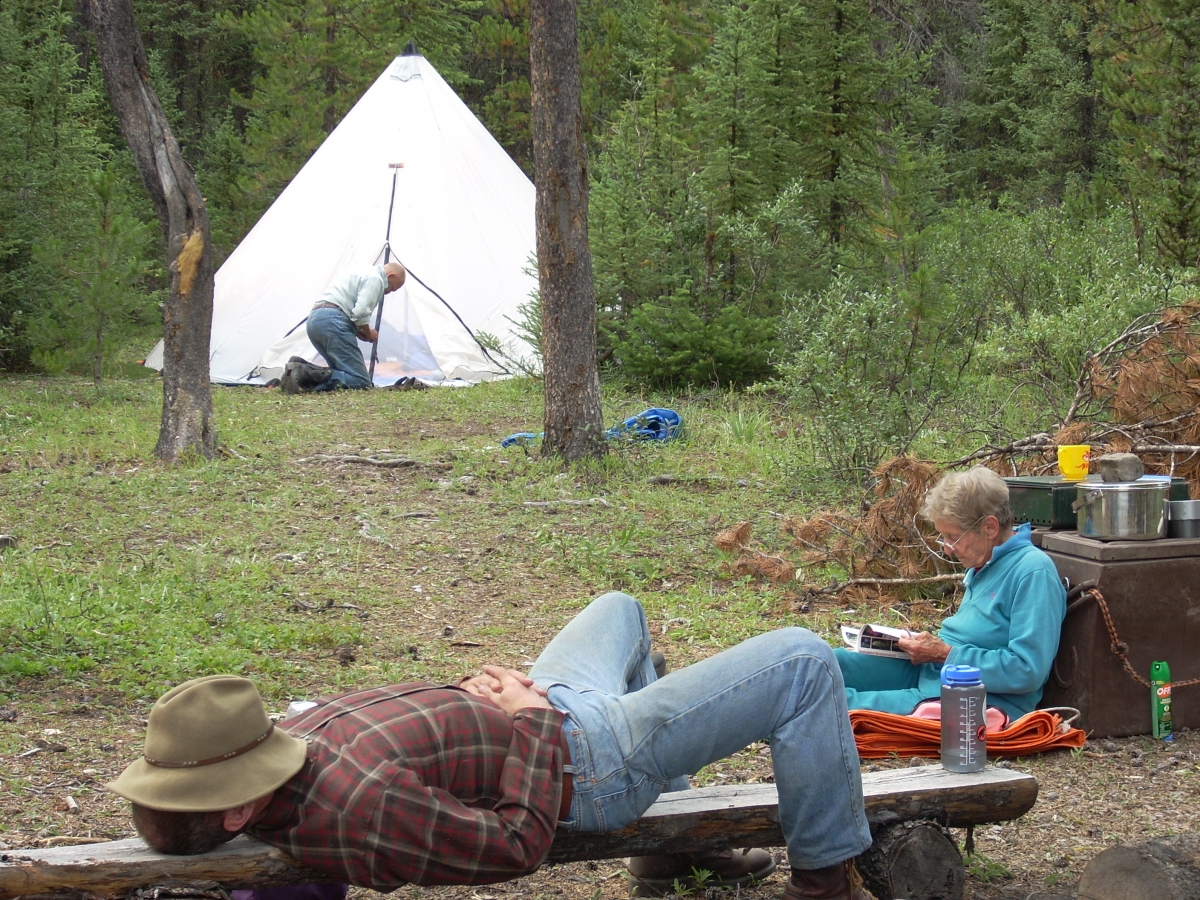
Want to rest easy in your wilderness tent? Spread mothballs around your camp. Bears have an extreme dislike for their odour.
8. Spread mothballs around your camp and tent to keep bears away. The naphtha chemical present in moth balls is greatly disliked by bears. Mothballs are used to keep bears away from dumpsites, etc. Keep the mothballs in an air tight plastic container so their smell will not permeate into your goods.
9. Personally, I like a “good” dog in camp. I feel that with all of the activity — horses, bells, dogs, people, etc. — a bear has to be very hungry or slightly insane to come into camp. But it does happen. I have had bears boldly walk into camp four times in my life and, in the morning, found fresh bear tracks around the tent at least that many times more. Frightened dogs have been known to bring a bear, hot on its heels, back to its owner, but my experiences with camp dogs have been good experiences. Cougars and dogs are mortal enemies. Cougars can be deathly afraid of dogs when they are on the hunt, yet stalk and kill a single dog with great relish. If your Shih Tzu meets a cougar while you are on a trail ride then my money is on the cougar, but your large Plott Hound would likely be an asset.
10. Mules are known to dislike cats and often dogs. They can be wonderful “guard dogs” on your property and willingly attack coyotes, cats, and other predators. Mules have been known to attack cougars while on a ride.
I hope these suggestions will be of some service. There are so many great bear scare stories to tell but no time or space. Do not be scared out of the bush, and please, watch for lightning! Happy Trails!
Related: The Lost Trail Ride - Horse Riding in Canada's Rockies
Related: Survival in the Back Country: Be Prepared
Check out more Holidays on Horseback.
All photos courtesy of Stan Walchuk, Jr.
Main photo: You have less chance of being killed by a predator while on a trail ride than being struck by lightning, but the chances of you and your horse being attacked and mauled is much greater than it was several years ago.



